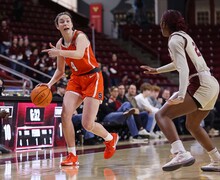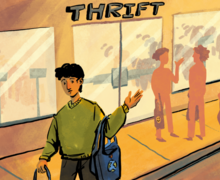Cheung: Students should utilize payment plans to address loans after college
It’s a tough pill to swallow, but soon-to-be college graduates need to start thinking about paying back their loans.
This month, Gov. Andrew Cuomo unveiled the “Get On Your Feet Loan Forgiveness Program” to help college graduates with lower paying entry-level jobs pay off the first two years of college loans. The program will cover more than 24,000 graduates that attended any New York college, stay in New York making $50,000 or less and qualify for federal loan repayment plans.
Or at least that’s Cuomo’s dream. When, or if, the plan survives the state legislature, no college student would be able to sign up for the program until 2019 at the earliest.
Graduates with low paying jobs who are struggling to pay back loans should consider signing up for income driven repayment plans offered by the federal government. These plans provide a structured schedule for loan payment, scaled to your income level. It’s a better alternative to letting your loans sit untouched for 20-25 years while nasty interest accrues.
Plans will pay out 10-20 percent of the gross income listed on your tax returns, chipping away at loans for 20-25 years. Under these plans, any remaining balance after those 20-25 years would be forgiven. For example, if you’re making $30,000 a year and after 25 years of payments you still have $5,000 of a $35,000 college loan to pay, the government will waive the remaining balance and forgive you.
There are many shapes and sizes of income-driven repayment plans. It’s about finding the right one for your income structure. Income based repayment plans and “pay as you earn” plans will base their payment plan around your initial income out of school. IBR plans will take 15 percent of your income each period for up to 25 years. Pay as you earn plans are less taxing, taking only 10 percent of your income each year for only 20 years. But in order to be eligible for the softer pay as you earn plan, you’ll have to be a first time borrower from the federal government without any outstanding loans to pay.
For people that do have other loans outstanding and do not meet initial income eligibility requirements, income-contingent repayment plans are an option. These plans will require higher payments of 20 percent and have a 25-year repayment period.
It’s important to note that these plans have a long list of requirements and eligibility standards that you should research before committing to. Some types of federal loans are not eligible for repayment under some of these plans. Additionally, people with families can make a stronger case for eligibility for one of these income driven repayment plans.
These plans are also not designed for students who graduate and take on well paying jobs, in which you’d be able to independently pay the loan back on your own schedule. IBR, ICR and pay as you earn plans generally require your federal student loan debt to be higher than your annual discretionary income. You can, however, make a case if your income is higher but the debt represents a significant burden.
If any of these plans sounds like an option after graduation, head to studentaid.ed.gov to see if you’re eligible for the variety of programs the federal government offers.
Paying loans is never fun, but starting the process early means finishing the process early. And that’s of priceless value.
Brian Cheung is a senior broadcast and digital journalism and finance dual major. His column appears weekly. He can be reached at bkcheung@syr.edu and followed on Twitter @bcheungz.
Published on February 1, 2015 at 11:15 pm





